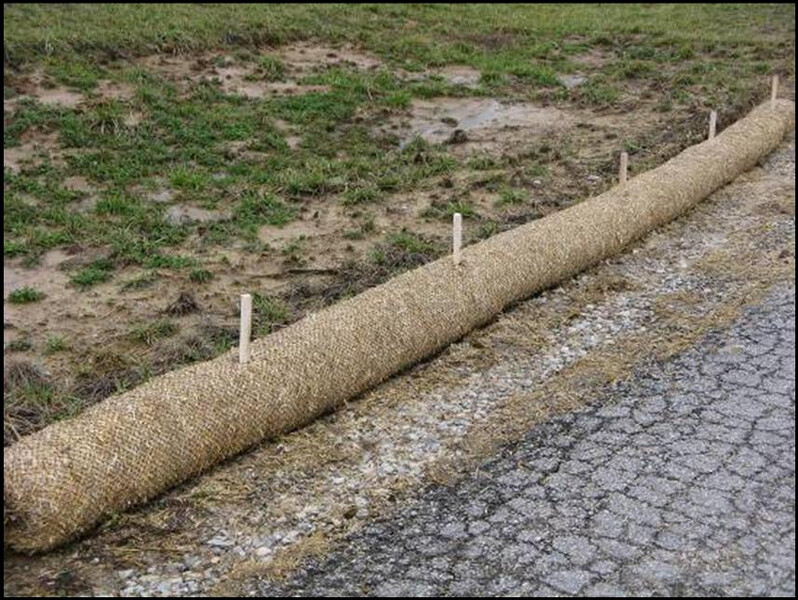Erosion Control Providers: Shielding the Environment
Ideal Practices for Disintegration Control in Building Projects
Are you dealing with a construction project and worried regarding disintegration control? Look no further! In this short article, we will direct you with the finest methods for stopping disintegration on your site. You'll find five essential methods, efficient debris and drainage management strategies, essential factors to consider for slope stabilization, and pointers for safeguarding plant life and soil. We'll likewise delve right into the importance of applying proper drainage systems. Get prepared to take on erosion head-on and make sure the success of your construction job.
5 Important Erosion Control Techniques

To effectively control disintegration on your construction site, you'll need to implement essential techniques such as slope stablizing and debris control procedures. Slope stabilization is crucial in preventing dirt disintegration on high inclines. One more effective method is the use of erosion control coverings or mats, which are put on the incline and aid maintain dirt bits while enabling plants to grow.
Effective Sediment and Overflow Monitoring

You can properly handle sediment and drainage in your building and construction project by carrying out correct disintegration control actions. Sediment and runoff monitoring is important to avoid disintegration and safeguard the surrounding setting. One reliable measure is the setup of silt fences along the border of the construction website. These fencings aid to consist of sediment and stop it from getting in neighboring water bodies. One more essential practice is the implementation of erosion control blankets or floor coverings. These blankets provide a protective layer on bare dirt, lowering the impact of rainfall and avoiding disintegration. In addition, the usage of debris basins or debris traps can assist to capture debris and stop it from entering stormwater systems. Routine maintenance of these steps is important to ensure their effectiveness throughout the construction task. This consists of cleaning up and evaluating sediment containers and routinely replacing silt fencings and erosion control coverings as required. By executing these erosion control actions, you can successfully handle debris and runoff in your building and construction task, decreasing the effect on the environment and complying with governing demands.
Secret Factors To Consider for Slope Stabilization
When thinking about incline stabilization, it's crucial to analyze the surface and identify possible locations of instability. You require to very carefully analyze the incline's attributes, such as its composition, water drainage, and angle patterns. Look for indicators of erosion, such as exposed roots, fractures, or down soil. These indications can offer you an idea of where stabilization procedures might be necessary.
When you have identified the unpredictable locations, you can begin implementing procedures to maintain the slope. One usual method is making use of retaining walls or terracing to produce a collection of flat actions, which can help distribute the weight and protect against additional erosion. Another choice is landscaping around trees with stone to grow vegetation on the incline, as the roots can aid anchor the dirt and control disintegration. Furthermore, installing disintegration control coverings or mats can give instant defense while greenery comes to be recognized.
It's critical to frequently check the stabilized slopes to guarantee their performance. Keep an eye out for any type of indications of activity or disintegration, and take prompt activity if needed. Routine maintenance, such as examining and fixing any kind of broken measures, is likewise important to ensure long-term stability.
Finest Practices for Plants and Dirt Defense
One effective method to protect greenery and dirt on inclines is by on a regular basis checking for signs of disintegration and taking prompt action if required. Begin by evaluating the slope for any type of indications of disintegration, such useful link as revealed roots, bare soil patches, or sediment build-up at the base. Implement disintegration control measures such as installing erosion control blankets, mulching, or even building preserving wall surfaces if required.
Implementing Proper Drain Solutions
When it comes to managing water circulation and protecting against erosion, recognizing these factors is important. Steeper inclines can lead to much faster water flow, raising the risk of erosion and flooding. On the various other hand, gentler slopes enable water to stream extra gradually, decreasing disintegration capacity.
Sandy soils have a tendency to drain pipes faster due to their rugged appearance, while clay dirts have a slower water drainage rate due to their portable nature. In addition, taking into consideration the dirt features aids protect against waterlogging, which can lead to bad plant development and damages to structures.
Final Thought
In verdict, when it comes to disintegration control in building and construction tasks, you need to follow these best techniques. Think about slope stablizing techniques to guarantee the stability of the website. By following these necessary practices, you can effectively regulate erosion and make certain the success of your building project.
To properly manage erosion on your building site, you'll require to execute essential methods such as slope stablizing and sediment control procedures. Slope stablizing is crucial in protecting against soil disintegration on flower bed pavers steep inclines. Another efficient strategy is the use of disintegration control blankets or mats, which are positioned on the slope and assistance retain dirt fragments while allowing plant life to grow. One more alternative is to grow vegetation on the incline, as the roots can assist secure the soil and control disintegration. Implement disintegration control steps such as mounting erosion control blankets, mulching, or also creating retaining wall surfaces if required.